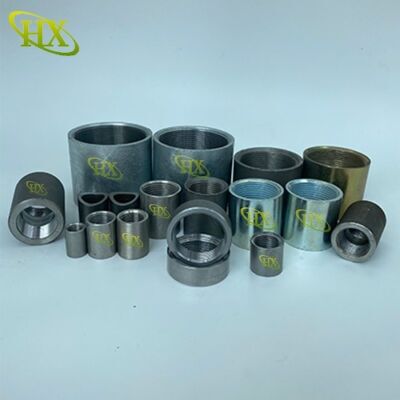Steel Pipe Nipple vs. Coupling (Steel Pipe Socket)
When working with steel pipes, choosing the right fittings is crucial for ensuring a secure and leakproof connection. Two commonly used components are steel pipe nipples and steel pipe couplings (or sockets). While both serve to connect pipes, they have distinct designs and applications.
This article explains the key differences between steel pipe nipples and couplings, helping you select the right fitting for your plumbing, industrial, or construction projects.
- Definition and Design
A steel pipe nipple is a short piece of pipe with male threads on both ends. It is used to extend or connect two femalethreaded fittings or pipes.
Close Nipple – Very short, with threads covering the entire length.
Short Nipple – Slightly longer than a close nipple.
Long Nipple – Extends further, allowing more space between connections.
Hex Nipple – Features a hexagonal middle section for easy wrench tightening.
Steel Pipe Coupling (steel pipe Socket)
A steel pipe coupling (or socket) is a short cylindrical fitting with female threads on both ends. It joins two malethreaded pipes or fittings in a straight line.
Full Coupling – Connects two pipes of the same diameter.
Reducing Coupling – Joins pipes of different diameters.
Half Coupling – Has only one threaded end, used for branching pipelines.
- Key Differences Between Nipples and Couplings
| Steel Pipe Nipple vs Coupling | ||
| Feature | Steel Pipe Nipple | Steel Pipe Coupling |
| Thread Type | Male threads on both ends | Female threads on both ends |
| Function | Extends or connects female-threaded fittings | Joins two male-threaded pipes |
| Length | Short to medium (varies by type) | Typically short |
| Installation | Screws into female fittings | Screws onto male pipe ends |
| Common Uses | Extending pipe runs, connecting valves/fittings | Repairing or joining pipes in-line |
- When to Use a Nipple vs. a Coupling?
Use a Steel Pipe Nipple When:
You need to extend a pipe or connect two femalethreaded components.
You require a hex nipple for easy tightening with a wrench.
You need a close nipple for tight spaces.
Use a Steel Pipe Coupling When:
You need to join two malethreaded pipes in a straight line.
You want to repair a broken pipe by splicing it together.
You need a reducing coupling to connect pipes of different sizes.
- Conclusion
Understanding the difference between steel pipe nipples and couplings ensures proper pipe installation and maintenance.
Nipples = Malethreaded connectors for extending or joining female fittings.
Couplings = Femalethreaded connectors for joining malethreaded pipes.
Choosing the right fitting enhances durability, prevents leaks, and ensures efficient fluid or gas flow in piping systems.
For more plumbing and pipe fitting guides, stay tuned to our blog!



